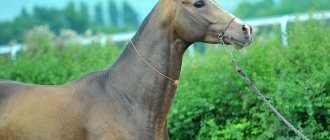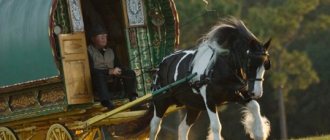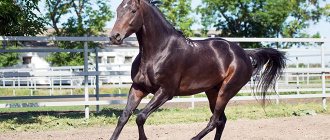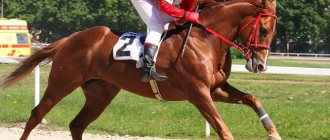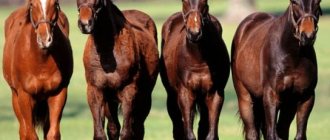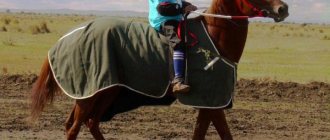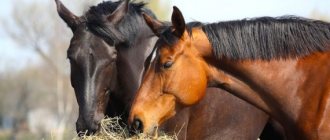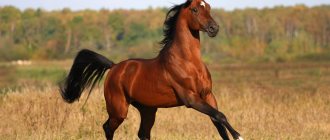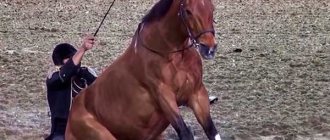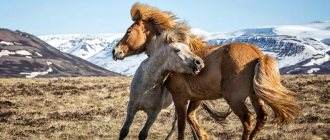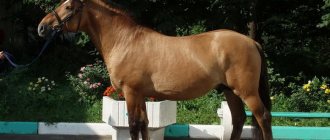Mongolia is a real mystery for many people. Meanwhile, it is in this country that nature is still preserved in its original form. The endless Mongolian steppes stretch for many hundreds of kilometers, from the taiga zone to the Gobi Desert. Horses in such areas are simply free. Almost all Mongols are natural horsemen. Often Mongolian children are put on the saddle before they can even walk.
The Mongolian horse has been an integral part of Mongolian life for many centuries.
These very interesting animals will be discussed further.
History of the breed
The breed has long roots, since already at the peak of the development of Mongolian statehood in the 13th century, horse breeding was a key branch of the national economy. It was the mounted troops that made the greatest contribution to the victories of Genghis Khan. The exact dates of the origin of the breed cannot be identified due to the lack of breeding records of horses. The seizure of territories by the outstanding military leader of the Mongols, and with them the cultural breeds of horses, could not contribute to the improvement of the racing qualities of the Mongolian horse. All attempts to mix breeds were unsuccessful. The horse remained just as small due to the harsh conditions of detention (including the same climate).
According to scientists, the main ancestor of the Mongolian horse is not the aboriginal inhabitants of the wild steppes (Przewalski's horses), but the North Mongolian tarpans. The genotype of the breed is diverse, formed from several species over many centuries.
Equipment Features
Horse harness makers have always paid special attention to its decoration. The design of the Mongolian horse bridle allows you to pull out the bit without removing it. The bridle is made from narrow rawhide straps. They, as a rule, have a thin forged snaffle, to which a long chemburr made of braid is attached. It always remains in the hands and is often used as a whip. For the holiday, the bridle and saddle are richly decorated.
Saddles are made in the national style. The wooden tree consists of two very short shelves and a wide, trapezoidal bow, the front of which is slightly higher than the back, and the attachment to the shelves is made at an angle. The purpose of the saddle, the age of the rider and his gender must be taken into account. The saddle can be everyday or festive, all parts of which are richly decorated with silver, like the bridle. On holiday, stirrups are also decorated with embossing and engraving. The saddle cloth and shade are decorated with embroidery and embossing. The saddles have reddish, pink, brownish, yellow and other variegated shades.
Description of the breed
Small in stature, the height of stallions at the withers is no more than 128 cm , of mares - 127 cm . The body is long, voluminous, the chest is deep, barrel-shaped. The legs are dry and short, the joints are well developed, the hooves are stable. The neck is short and muscular, set low. The head is large, the profile is hook-nosed. The most common colors include: gray, bay, dun, savrasaya, red, black. The skin is thick and dense, the hairline is thick, and in winter it is elongated.
Characteristic
Horses of the Mongolian breed have a massive and broad-browed head, a rather short horse neck, a long cylindrical body and low withers. They have dry, albeit short, limbs, and small but surprisingly strong hooves. Their fur is coarse and thick. And the tail and mane are quite long, and their threads are often used in the process of weaving ropes. It is with them that the structure of the yurts is tightened. But the hair of the tail is traditionally used in the bowed musical instrument morinkhura. Their hooves are extremely stable, and rare horses are shod.
Today, the number of heads of this horse breed is more than two million. And all this, despite the fact that the Mongolian horse is bred by nomads. Those whose maximum number reaches five hundred thousand. The Mongolian horse is distinguished by its small size.
Piebald suit
However, she has nothing to do with ponies. And by all the parameters that she has, she is a full-fledged horse. Characteristic of Mongolian culture is a special attitude towards all horses. And in particular, it manifests itself among nomadic families.
But, even in modern Mongolia, equestrian sport is the second most popular sport. Of course, after the struggle. Many families give Mongolian horses to their sons on their third birthday, and this surprise is considered a traditional gift here.
Species diversity of the Mongolian breed
- Bait horse. Tall, has a less elongated and not as massive body as a typical Mongolian horse. The coat is less abundant. Distributed in the western regions of the country.
- Arshant and Khotogoi horses. They stand out for their less massive body and more modest leg bones. Characteristic of the northern borders of the central part of the republic.
- Ulcinj, Dondobainsk and Yugodzira horses. Muscular, thick-boned physique with short legs and abundant hair. Often used for agricultural work in eastern Mongolia.
- Delgerkhangai horse. The smallest and at the same time muscular variety. It is bred in the desert areas of Umnegovi aimag.
Breeding
Today, the Mongolian horse is bred for grazing in herds. Its constitution, physique, and other qualities are mainly formed under the influence of climate, topography, characteristics of keeping, feeding, pasture and use. The territory of Mongolia itself is a plateau surrounded by mountain ranges. The area is elevated above sea level up to 1300 meters. The northern part has a mountain-taiga landscape and is replaced by forest-steppe towards the center, which turns into a wide steppe strip to the south. This zone of Mongolia is saturated with half and completely desert places.
In winter, herds are kept in areas that are most protected from the winds, with grass, and the horses' thirst is quenched with snow. In summer, horses are moved to pastures near water (rivers, lakes, springs). Here the weight of Mongolian horses is restored. But they face many hardships: extreme heat, scorching winds with clouds of dust, lack of water, attacks by flies and mosquitoes. In the fall, temperatures drop, so horses accumulate large reserves of fat in preparation for a difficult winter.
Photo of a Mongolian horse
Mongolian horse in people's everyday life
The Mongolian horse faithfully serves its owner for up to 24 years . Reaches maturity at 6 years. The breed is very hardy and not picky. With a rider it can travel 80 km in a day, and on its own - 120 km. The horse is a significant help in the household, transporting bales and other cargo. The carts are harnessed in pairs. Horses are rarely used for meat, as the priority is to use the horses to their full potential. Mares provide nutritious airag. Before the era of road transport, the horse was the link between the capital and remote regions of the country as part of the “urton service”. The Mongolian armed forces use the horse for transport purposes.
Interesting Facts
- The nomadic Mongolian tribes always treated horses with care. For displays of cruelty, the horse could be taken away from the owner, and he himself could be kicked out of the tribe.
- In the 12th century, the urton service appeared in Mongolia. This is a system for horse-drawn message delivery with the organization of roads, stations for changing horses, and wells. The main characters were horsemen and Mongolian horses. In Europe, the institution of messengers was organized fragmentarily 2 centuries later.
- Chubara (leopard) color is not often found among horses. Personal envoys and messengers of Genghis Khan used forelock horses. It was an ancient analogue of the current flashing lights on cars in the motorcade of high-ranking persons.
- Genghis Khan died suddenly at the age of 65. The cause of the emperor's death is said to be illness, a wound received from a captured Tangut princess. One of the main versions is considered to be a fall from a horse. Which is very reminiscent of “death by one’s horse.”
- The Great Patriotic War turned free Mongolian horses into front-line soldiers. In the army, every fifth horse was from Mongolia. From 1941 to 1945, about half a million heads of steppe horses and mares were imported into our country.
- a monument to Mongolian horses was erected and inaugurated in Moscow . This happened on May 5, 2022 on Poklonnaya Hill. The monument was created by sculptor Ayuurzan Ochirbold.
Mongolia is the most horse country in the world. Its population is slightly more than 3 million 200 thousand people. Mongolian herds number 2 million heads. That is, for every three people there are 2 horses. The ratio is constantly changing and is not in favor of short, hardy, wayward horses.
Sources:
https://fermhelp.ru/loshadi-mongolskoj-porody/ https://stroy-podskazka.ru/loshadi/porody-i-masti/mongolskaya/ https://givotniymir.ru/mongolskaya-loshad-opisanie-osobennosti- uhod-i-tsena-mongolskoy-loshadi/
Horse racing
The Ulaanbaatar Hippodrome is an outstanding landmark of the country. The speed record for a distance of 1600 m is 2 minutes and 6 seconds; the best horses overcome 3200 m in 4 minutes and 23 seconds. As part of the Mongolian national holiday Naadam, about 40 thousand horses compete. The length of the distances varies from 16 to 32 km. In Naadam racing, the age limit for riders is strictly observed - children from 5 to 14 years old. The fastest Mongolian horses come from Undurkhan, from where they came to other regions of the country and to China.
Horse racing procedure:
- 1st race - two-year-olds - distance 15 km.
- Race 2 – three-year-olds – 20 km.
- Race 3 – four-year-olds – 25 km.
- Race 4 – five-year plan – 28 km.
- Race 5 - other age categories (over 5 years old) - 30 km.
- Heat 6 – stallions – 28 km.
- Heat 7 - pacers.
Main scope of application
During the time of Genghis Khan, the Mongolian horse was an integral participant in all military battles.
The popularity of using the Mongolian horse in our time has been gained through horse racing, which is supported by the state and is the main purpose of breeding this breed in Mongolia. Young foals are trained for long distance racing starting in their first year of life. A good horse with a light rider in the saddle covers a distance of 25 km in forty minutes.
To obtain better results during racing, the horse is placed on a special feeding regimen. Increased agility is achieved by feeding the animal only at night.
The annual Naadam holidays are not complete without competitions with a large number of participants. Before the celebration, the horse is decorated in the traditional style.
The bridle is sewn from openwork braid with national patterns. The festive saddle, colorful and bright, is covered with silver elements and inserts. Stirrups are made in the form of chasing or engraving.
Participants ride out into the steppe where competitions are held.
Mentioning the next area of application of the Mongolian horse breed, we note that the Mongols do not eat horse meat. The country's population has a special relationship with horses. Meat as a food product is used only for export to other countries.
But the product obtained from mares is used for consumption. Airag drink is made in 2 consistencies:
- thick - to satisfy hunger;
- liquid drink quenches thirst.
Mongolian horse: latest trends
With the advent of civilization in the Mongolian steppe, attitudes towards keeping horses changed. They are prepared with hay and vaccinated against diseases. Primitive structures are erected to protect Mongolian horses from adverse weather conditions. Finally, luck smiled on the adepts of crossing. Among the improved breeds are the Don and Trotter. The introduction and development of new forms of agriculture in Mongolia contributes to a civilized attitude towards animals. Animal advocates are eagerly awaiting the changes announced by the authorities to the legislative framework of the republic, which will tighten the minimum requirements for the care of Mongolian horses.
Recommendations
- ^ a b
"Masson Smith" (PDF). afe.easia.columbia.edu. Retrieved 2014-08-25. - ^ a b
Udina, I.G.
"Computer analysis of mitochondrial DNA D-loop changes in Asian horse breeds" (PDF). bionet.nsc.ru
. - ^ a b
Kefena, E.;
Mekasha, Y.; Han, J. L.; Rosenbom, S.; Haile, A.; Dessie, T.; Beja-Pereira, A. (2012). "Inconsistencies between morphological systematics and molecular systematics in the equid stem lineage: a review of the case of taxonomy of the genus Equus". Animal husbandry
.
143
(2–3): 105. doi:10.1016/j.livsci.2011.09.017. - ^ a b
Cheng, P. (1984).
"Cattle Breeds of China". Animal Production and Health Paper
46 (E, F, S). Publ. FAO, Rome, 217 pp. - ^ a b c d f
Jazdzik, Elizabeth (April 1, 2011). "Mongolian horse and rider." Independent Study Project (ISP) Collection of Articles 1068. Retrieved 2014-08-08. - Kendall, Elizabeth. Traveler in China,
Chapter 13. 1913. Traveler in China - ^ a b c d
https://digitalcollections.sit.edu/cgi/viewcontent.cgi?article=1543&context=isp_collection - Hakluyt, Richard (1903). Texts and versions by John de Plano Carpini and William de Rubrucka: how... - Richard Hakluyt, Giovanni (da Pian del Carpine, Archbishop of Antivari), Willem van Ruysbroeck - Google Books
. Retrieved 2014-08-25. - Haslund, Henning. In Secret Mongolia, page 110.
- ^ a b c
"Tim Cope - traveling from Mongolia to Hungary!" Thelongridersguild.com. Retrieved 2014-08-25. - Bayarsaikhan, B. Travel on Mongolian horses,
paragraph 102 - "Severe winter kills two million livestock." Montsame News Agency, Ulaanbaatar. 2010-02-11. Retrieved February 14, 2010.
- "Microsatellite variations in Japanese and Asian horses and their phylogenetic relationships using the European equine group." jhered.oxfordjournals.org. Retrieved August 8, 2014.
- https://cricket.biol.sc.edu/papers/horses/Genetic%20Variation%20in%20Przewalski%27s%20horses,%20with%20special%20focus%20on%20the%20last%20wild%20caught%20mare,%20231% 20Or.pdf
- Haslund, Henning. In Secret Mongolia,
paragraph 110. - "Proceedings of the Third International Conference on Bioinformatics of Genome Regulation and Structure" (PDF). Siberian Branch of the Russian Academy of Sciences. 2002. Retrieved 2014-08-08.
- "Microsatellite variations in Japanese and Asian horses and their phylogenetic relationships using the European horse group." jhered.oxfordjournals.org. Retrieved 2014-08-08.
- Horse in Japan, 1615-1912 Archived 2014-08-21 in the Wayback Machine (exhibition guide gallery, September 20 - November 12, 2010). Berea, KY: Berea College Art Gallery. As of August 2014
- "Archive copy" (PDF). Archived from the original (PDF) on 2015-09-24. Retrieved 2014-08-20.CS1 maint: zipped copy as title (link)
- Jansen, T; Forster, P; Levin, M.A.; and others. (August 2002). "Mitochondrial DNA and the Origin of the Domestic Horse". Proceedings of the National Academy of Sciences
.
99
(16):10905–10910. Bibcode:2002PNAS ... 9910905J. doi:10.1073/pnas.152330099. PMC 125071. PMID 12130666. - ^ a b
https://hwcdn.libsyn.com/p/e/2/a/e2a1d0358bc915f8/dchha43_Wrath_of_the_Khans_I.mp3?c_id=4619666&expiration=1407651729&hwt=420e072218ce055f89049bfc - Davis, Matthew. When Everything Gets Dark: A Mongolian Winter's Tale, page 169.
- "Article: Horse in Mongolian culture." amnh.org. 2014-05-01. Archived from the original on 2015-05-02. Retrieved 2014-08-25.
- New complete documentaries about Atlantis (2012-04-09). "Mongolia". YouTube. Retrieved 2014-08-29.
- Khan, Paul. The Secret History of the Mongols: The Origin of Genghis Khan, p. 108.
- Hoang, Michelle. Genghis Khan. New Books Amsterdam, 1991.
- ^ a b
Sventoslavsky, V. “Confrontation of two worlds: weapons and armor of Central European and Mongolian troops in the first half of the 13th century” (PDF).
rcin.org.pl.
_ - https://afe.easia.columbia.edu/mongols/conquests/khans_horses.pdf
- Splinters. The Secret History of the Mongols, page 126
